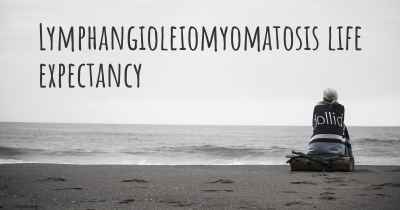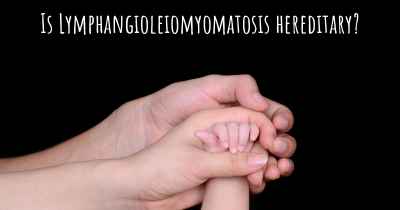Is it advisable to do exercise when affected by Lymphangioleiomyomatosis? Which activities would you suggest and how intense should they be?
See if it is advisable for people with Lymphangioleiomyomatosis to practice sports and which ones are the most recommended if you have Lymphangioleiomyomatosis

Lymphangioleiomyomatosis (LAM) is a rare lung disease that primarily affects women of childbearing age. It is characterized by the abnormal growth of smooth muscle cells, which leads to the formation of cysts in the lungs. As a result, individuals with LAM may experience symptoms such as shortness of breath, coughing, chest pain, and fatigue.
When it comes to exercise and LAM, it is important to approach physical activity with caution. While exercise can have numerous benefits for overall health and well-being, it is crucial to consider the individual's specific condition and consult with a healthcare professional before starting or modifying any exercise routine.
Benefits of Exercise for LAM Patients:
Engaging in regular physical activity can offer several advantages for individuals with LAM:
- Improved cardiovascular fitness: Exercise can enhance heart and lung function, which may help alleviate some of the respiratory symptoms associated with LAM.
- Enhanced muscle strength and endurance: Strengthening exercises can help improve overall muscle strength and endurance, making daily activities easier to perform.
- Reduced anxiety and depression: Regular exercise has been shown to have positive effects on mental health, including reducing anxiety and depression symptoms.
- Weight management: Maintaining a healthy weight is important for managing LAM symptoms, and exercise can contribute to weight management efforts.
Recommended Exercises for LAM Patients:
While the specific exercise recommendations may vary depending on the individual's overall health, severity of LAM, and any other existing medical conditions, here are some exercises that are generally considered safe and beneficial for LAM patients:
- Aerobic exercises: Low-impact activities such as walking, swimming, cycling, and using an elliptical machine can help improve cardiovascular fitness without putting excessive strain on the lungs.
- Strength training: Light to moderate resistance training using weights, resistance bands, or bodyweight exercises can help improve muscle strength and endurance. It is important to start with light weights and gradually increase intensity under the guidance of a healthcare professional or a certified trainer.
- Flexibility exercises: Stretching exercises, yoga, or tai chi can help improve flexibility, joint mobility, and relaxation.
- Breathing exercises: Techniques such as diaphragmatic breathing and pursed-lip breathing can help individuals with LAM manage shortness of breath and improve respiratory function.
Exercise Intensity and Safety Precautions:
When it comes to exercise intensity, it is crucial for individuals with LAM to listen to their bodies and avoid overexertion. Here are some important considerations:
- Start slowly: Begin with low-intensity exercises and gradually increase the duration and intensity over time.
- Monitor symptoms: Pay attention to any worsening of symptoms during or after exercise. If shortness of breath, chest pain, or dizziness occurs, it is important to stop exercising and seek medical attention.
- Stay hydrated: Drink plenty of water before, during, and after exercise to prevent dehydration.
- Modify exercises: Adapt exercises to individual abilities and limitations. For example, using a stationary bike instead of walking if walking causes discomfort or fatigue.
- Work with healthcare professionals: Consult with a healthcare professional, such as a pulmonologist or a respiratory therapist, who can provide personalized exercise recommendations and guidance based on the individual's specific condition.
Conclusion:
While exercise can offer numerous benefits for individuals with Lymphangioleiomyomatosis (LAM), it is essential to approach physical activity with caution and seek guidance from healthcare professionals. Engaging in low-impact aerobic exercises, strength training, flexibility exercises, and breathing techniques can help improve cardiovascular fitness, muscle strength, and overall well-being. However, it is important to start slowly, monitor symptoms, and make necessary modifications to ensure safety and avoid overexertion. By incorporating exercise into a well-rounded treatment plan, individuals with LAM can potentially enhance their quality of life and manage their symptoms more effectively.








